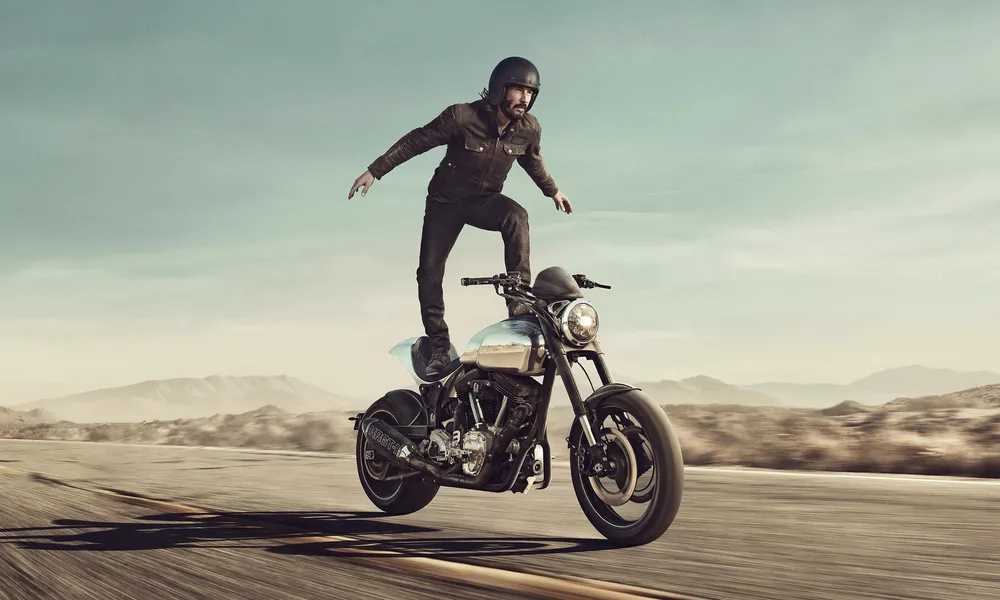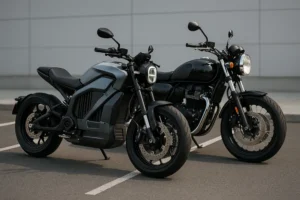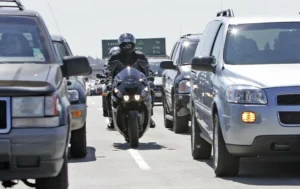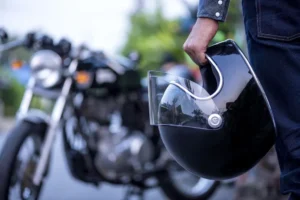Motorcycle laws are usually designed with safety and traffic regulation in mind, but not all of them make sense to today’s riders. Over the years, lawmakers across different states have passed some unusual and downright quirky motorcycle regulations. Some are outdated remnants of older traffic codes, while others reflect unique regional attitudes toward motorcycle use.
For riders, these strange laws can be both amusing and frustrating — and in some cases, still enforceable. Here are ten of the strangest motorcycle laws that continue to exist in the U.S. and beyond.

1. No Helmet, No Problem — But Only in Illinois, Iowa, and New Hampshire
While most states require helmets in some form, three states — Illinois, Iowa, and New Hampshire — have no helmet laws whatsoever. Riders are completely free to choose, even though statistics show helmets save lives. The oddity here isn’t the freedom itself but the sharp contrast with neighboring states where riders can face steep fines for the same behavior.
2. No Motorcycle Riding in the Cemetery — Massachusetts
In Massachusetts, it’s illegal to ride a motorcycle through a cemetery unless you’re there for a funeral. While the intent is to maintain respect and quiet, the law is oddly specific and often cited as one of the stranger examples of local motorcycle restrictions.
3. No Passenger Restrictions — Arkansas Age Rule
In Arkansas, passengers on motorcycles must be at least 8 years old. While many states regulate passenger seating and safety equipment, this arbitrary age rule surprises riders traveling through the state. A 7-year-old can legally ride in a car without a helmet, but not on the back of a motorcycle.
4. No Coasting in Neutral — Many States
Coasting downhill in neutral might seem harmless, but in states like California, Colorado, and New Mexico, it’s explicitly illegal. This applies to motorcycles as well as cars. Lawmakers argue it’s unsafe because it reduces a rider’s ability to control speed and maneuver quickly.
5. No Handlebars Too High — “Ape Hanger” Laws
In many states, you can’t have handlebars that rise more than a certain height above the rider’s shoulders or seat. For example, in California, the limit is six inches above the rider’s shoulders. These laws were introduced decades ago to curb “ape hanger” customization, but they still exist even though modern motorcycle design has evolved.
6. No Animals on Motorcycles Without Protection — California
California law requires that if you transport an animal on a motorcycle, it must be secured in a container or restrained to prevent injury. While intended for safety, it leads to some unusual enforcement situations — think of riders who like to bring small dogs along for the ride.
7. No Earphones While Riding — Many States
Several states, including California, Minnesota, and New York, ban the use of headphones or earbuds in both ears while riding. Riders are only allowed one earbud so they can still hear surrounding traffic. While the logic makes sense, the restriction can feel strange compared to car drivers who freely use full stereo systems or noise-canceling headsets.
8. No Motorcycles in Certain Lanes — New Jersey Turnpike
The New Jersey Turnpike has long been criticized for restricting motorcycles from certain lanes, particularly during heavy traffic or construction. While not a statewide law, it shows how motorcycles are sometimes treated differently on major roadways.
9. No Trick Riding — But Broadly Defined
In some states, laws ban “trick riding” without a clear definition of what that means. For example, standing on your pegs, stretching, or adjusting gear while riding could technically be interpreted as a violation. This vague wording has led to disputes between riders and law enforcement about what constitutes unsafe riding.
10. No Sunday Motorcycle Riding (Historical) — Connecticut’s “Blue Laws”
Although no longer enforced, Connecticut once had “blue laws” that prohibited motorcycle riding on Sundays. These were part of broader restrictions tied to religious observances. While outdated, remnants of these codes can still be found in some town ordinances, making them an interesting piece of motorcycle law history.
Why Strange Laws Stick Around
So why do these strange motorcycle laws still exist?
-
Historical Holdovers: Some laws were written decades ago and never repealed.
-
Safety Concerns: Lawmakers often err on the side of over-regulation.
-
Cultural Perceptions: Motorcycles are sometimes seen as more dangerous or “rebellious,” leading to stricter or unique rules.
-
Enforcement Practicality: Even if laws seem odd, they give law enforcement tools to regulate potentially risky behavior.
How These Laws Affect Riders
Even if they seem funny or outdated, strange motorcycle laws can have real consequences. Riders caught violating them may face:
-
Fines and penalties
-
Insurance complications
-
Traffic record points
For long-distance riders, these laws highlight the importance of knowing local traffic codes before traveling.
Conclusion
Motorcycle laws are meant to keep riders safe, but sometimes they take unusual or unexpected forms. From age limits and odd restrictions to outdated remnants of past eras, these strange motorcycle laws show how varied and inconsistent regulations can be across the U.S.
Whether you laugh at them or shake your head in frustration, one thing’s for sure: knowing these quirks can help you avoid unnecessary trouble on the road. And they make for great stories to share with fellow riders.





